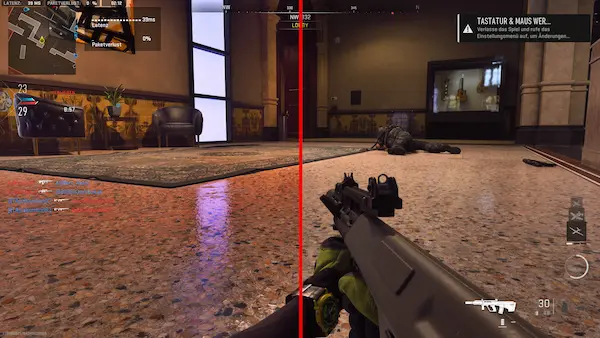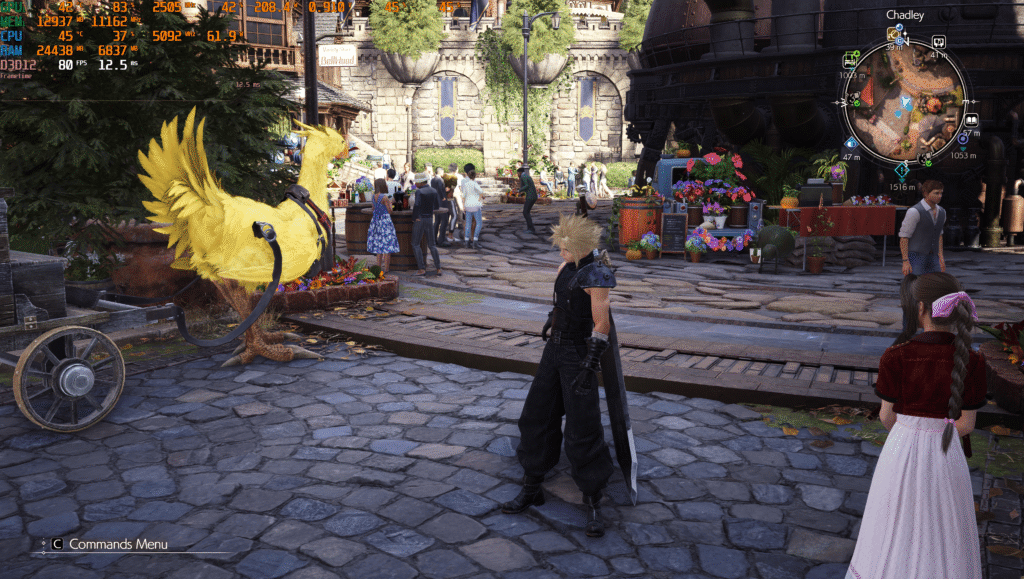ReShade has gained immense popularity in the gaming community for its ability to enhance graphics, improve lighting, and inject new life into both modern and classic games. For those unfamiliar, ReShade is a generic post-processing injector developed to work with Direct3D and OpenGL games. It provides players with access to a wide array of visual enhancements such as ambient occlusion, real-time color grading, depth of field, and screen space reflections. The ability to dramatically alter a game’s visual presentation without modifying its core files makes ReShade an attractive tool for both casual gamers and content creators.
But an important question arises for users wanting to harness this powerful tool: which games are actually compatible with ReShade? Since ReShade operates by injecting code at the API level, compatibility isn’t guaranteed across the board. There are factors such as the rendering engine a game uses, its anti-cheat policies, and developer support that influence whether ReShade works seamlessly. This article delves deep into the scope of ReShade compatibility, providing context, insights, and guidance for players across different genres and platforms.
Understanding How ReShade Integrates with Games
Before diving into game-specific compatibility, it’s essential to understand how ReShade interacts with games on a technical level. ReShade hooks into the graphics API that a game uses to render its visuals—this is typically DirectX 9, 10, 11, or 12, or OpenGL. With recent updates, ReShade has also added experimental support for Vulkan, expanding its reach to newer titles and engines. By intercepting frames before they appear on the screen, ReShade can apply shaders and post-processing effects, thereby enhancing the game’s visual output without altering its files.
Because ReShade operates on the level of graphics APIs, its compatibility is less about the specific game and more about whether the game uses a supported API. That said, even games with compatible APIs might not play well with ReShade due to anti-cheat mechanisms, engine peculiarities, or limitations in driver implementation. Therefore, the relationship between ReShade and game compatibility is nuanced rather than binary.
Compatibility with Modern AAA Titles
Modern AAA games, particularly those using DirectX 11 or DirectX 12, tend to work well with ReShade. Games built on engines like Unreal Engine 4, CryEngine, and Unity generally allow smooth integration with ReShade, provided that there are no anti-cheat systems that block third-party injections. For example, story-driven single-player titles such as “Cyberpunk 2077,” “The Witcher 3: Wild Hunt,” and “Red Dead Redemption 2” are known to be highly compatible with ReShade. Players frequently use the tool in these games to boost realism by adding effects like global illumination, enhanced depth of field, or advanced sharpening filters.
However, not every AAA game supports ReShade equally. Some games include aggressive anti-tampering protections or proprietary rendering pipelines that interfere with injection. For instance, games that use custom DirectX 12 renderers might present problems because ReShade’s DirectX 12 support, while functional, is not as mature as its DX11 or OpenGL counterparts. Moreover, some titles might require launch options or specific configuration tweaks to function correctly with ReShade.
Online Multiplayer Games and Anti-Cheat Systems
Compatibility with multiplayer games is a more delicate matter. Many online titles employ anti-cheat systems such as Easy Anti-Cheat (EAC), BattlEye, or Vanguard. These systems are designed to prevent any unauthorized injection into the game’s process, which includes ReShade. While ReShade is not a cheat, it modifies rendering processes, which can appear suspicious to anti-cheat software. Consequently, many multiplayer games either block ReShade outright or ban players for attempting to use it.
Games like “Fortnite,” “Valorant,” and “Call of Duty: Warzone” are known to restrict or entirely prevent ReShade injection due to the presence of strict anti-cheat protocols. Developers of these titles prioritize competitive integrity and therefore restrict any tools that alter the game’s appearance or behavior, even cosmetically. In some cases, using ReShade with these games can result in permanent account bans, making it highly risky.
However, there are exceptions. Some multiplayer titles adopt a more lenient stance. For example, games like “Guild Wars 2” and “Final Fantasy XIV” have communities that openly use ReShade, with developers either tolerating or ignoring its usage as long as it doesn’t provide gameplay advantages. In these cases, the onus is still on the player to ensure they are not violating terms of service.
Classic and Indie Titles with Strong ReShade Support
One of the most remarkable applications of ReShade is in revitalizing older or less graphically advanced games. Classic titles that use DirectX 9, such as “Skyrim,” “GTA IV,” or “Mass Effect,” can benefit tremendously from ReShade’s suite of visual effects. By integrating modern lighting techniques, color correction, and bloom filters, ReShade can modernize the appearance of these games and significantly enhance the user experience.
Many indie games, especially those developed with open rendering standards like OpenGL or DirectX 11, are also compatible. However, indie titles vary significantly in engine and implementation, which means results may differ from one game to another. Some might require additional setup steps, like changing launch parameters or installing third-party compatibility layers, to get ReShade working properly.
Modding communities surrounding classic and indie games often offer pre-configured ReShade presets that simplify the installation process. These presets usually fine-tune the visuals specifically for a game, helping users bypass the trial-and-error phase of setup. This further strengthens compatibility, as experienced users test and document the best configurations for a given title.
VR Games and ReShade Compatibility
Virtual reality presents unique challenges for tools like ReShade. VR rendering involves stereoscopic images rendered separately for each eye, often with extremely low latency and tight synchronization. Injecting post-processing effects into this process can disrupt the delicate timing VR requires, leading to performance drops or motion sickness.
As a result, most VR games are not officially compatible with ReShade, and even those that do work often require experimental setups or third-party wrappers. Attempts to use ReShade in VR titles like “Half-Life: Alyx” or “Beat Saber” are generally met with mixed success. In some niche cases, developers or enthusiasts have created specialized forks or add-ons to enable limited ReShade support in VR, but these are not officially maintained and may introduce instability.
For most users, the trade-off between visual fidelity and VR performance means ReShade is not practical in virtual reality environments. Until VR rendering pipelines become more flexible or ReShade introduces native VR support, compatibility will remain minimal at best.
Emulated Games and ReShade Integration
Another fascinating dimension of ReShade compatibility involves its use with emulators. Many gamers turn to emulators like PCSX2, Dolphin, or Citra to play older console games on modern PCs. Since these emulators render graphics through PC-compatible APIs like OpenGL or DirectX, they are often prime candidates for ReShade enhancement.
Applying ReShade to emulated games can drastically improve their appearance. For instance, players have used ReShade to add ambient occlusion, HDR toning, and color correction to “The Legend of Zelda: Twilight Princess” through the Dolphin emulator, giving it a remastered feel. This makes ReShade a powerful tool not just for modernizing old PC titles, but for enhancing the legacy of console games as well.
However, emulators often operate differently than native PC games, which means that configuration can be more complex. Users might need to change internal resolution settings or disable certain post-processing effects within the emulator to avoid conflicts with ReShade. Despite the technical overhead, the results are often worth the effort for fans of retro gaming.
Factors That Influence ReShade Compatibility
Beyond the game’s rendering API and anti-cheat policy, several other factors play a role in determining whether ReShade will work with a given title. One of the most critical elements is the rendering engine. Games that use proprietary engines or custom rendering paths often break ReShade functionality. Similarly, games that incorporate unusual post-processing methods or UI overlays can conflict with ReShade shaders, rendering them ineffective or even causing crashes.
Operating system compatibility is another consideration. While ReShade primarily targets Windows platforms, it can technically be used in Linux environments through compatibility layers like Wine or Proton. That said, the success rate varies, and users may need to perform additional troubleshooting to achieve full functionality.
Driver compatibility also plays a role. Outdated or improperly configured GPU drivers can interfere with ReShade’s injection, leading to graphical glitches or performance degradation. As such, ensuring up-to-date drivers and maintaining system stability are essential steps when attempting to use ReShade with any game.
Community Support and Preset Sharing
One of the biggest contributors to ReShade’s practical compatibility is the vibrant community that surrounds it. Thousands of users actively share configuration files, presets, tutorials, and performance benchmarks across forums, Discord channels, and modding websites. These community-driven resources help new users identify which games are compatible and how to best configure ReShade for optimal performance.
For instance, websites like Nexus Mods and forums such as Reddit’s r/ReShade are home to countless presets designed for specific games. These presets often include detailed instructions, configuration files, and before-and-after screenshots, making it easier for users to get started. In many cases, games that initially seem incompatible can be made to work through community-discovered workarounds or experimental settings.
Moreover, ReShade’s open development process allows contributors to add compatibility for more games over time. With each update, the scope of games that ReShade supports grows, as does the collective knowledge about how to integrate it into different gaming environments.
Conclusion
Determining which games are compatible with ReShade is not a question of fixed boundaries but of ongoing experimentation and community effort. While games that use standard APIs like DirectX 11 or OpenGL typically work without issue, complications arise in multiplayer settings, proprietary engines, and VR environments. Compatibility is as much about configuration and context as it is about technical architecture.



